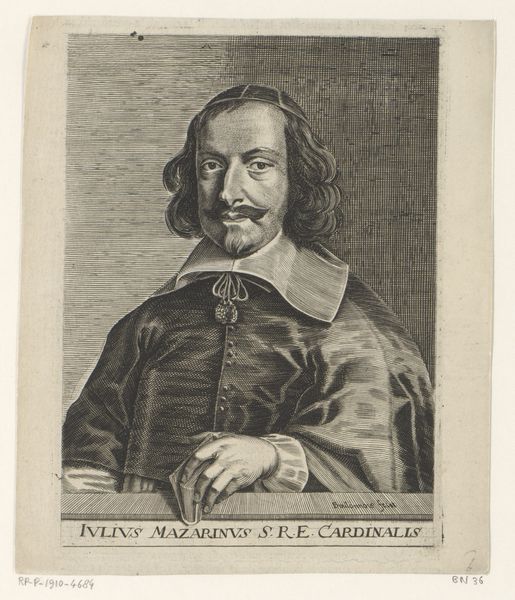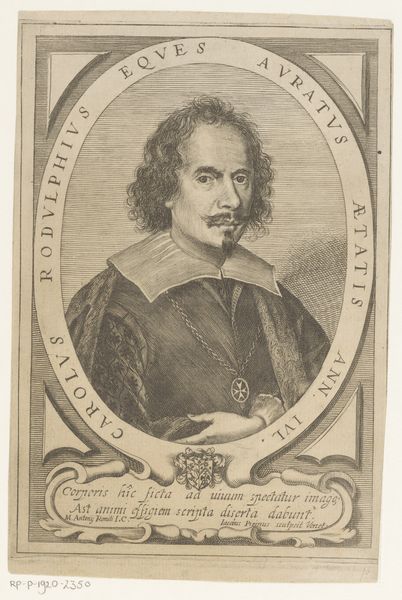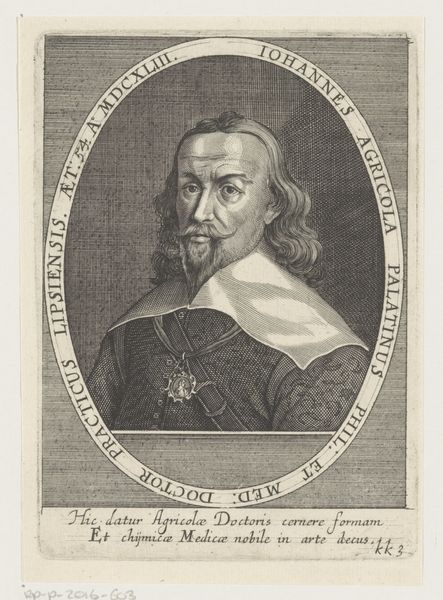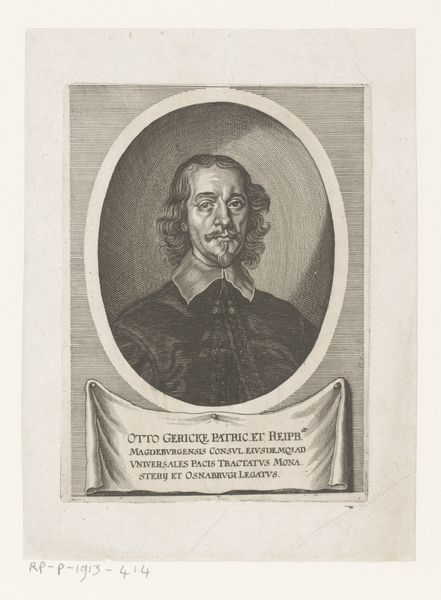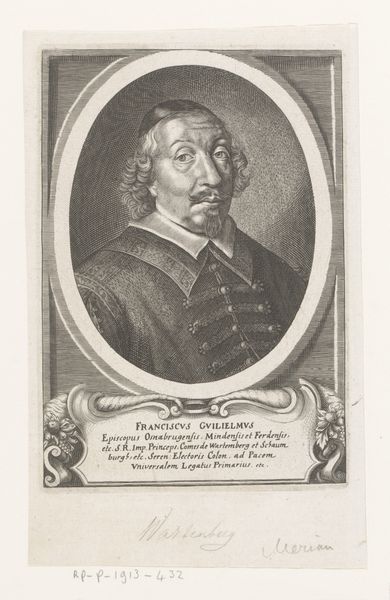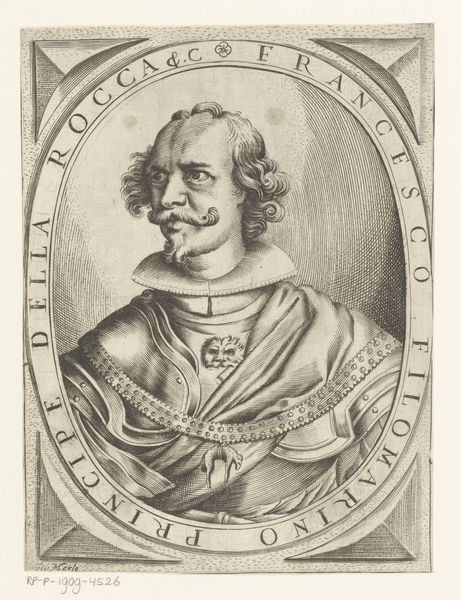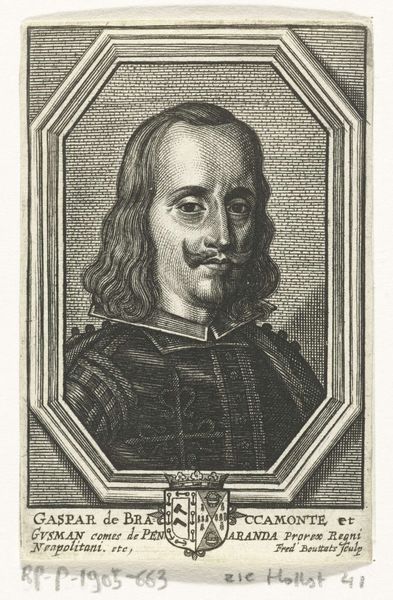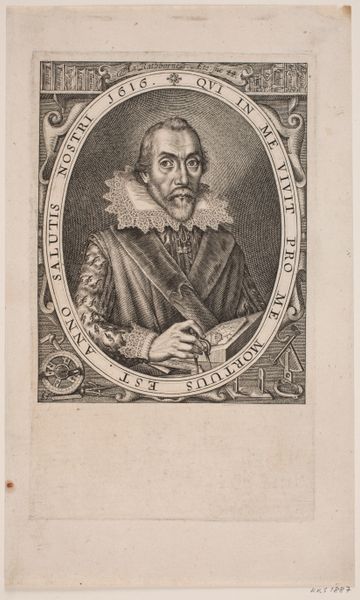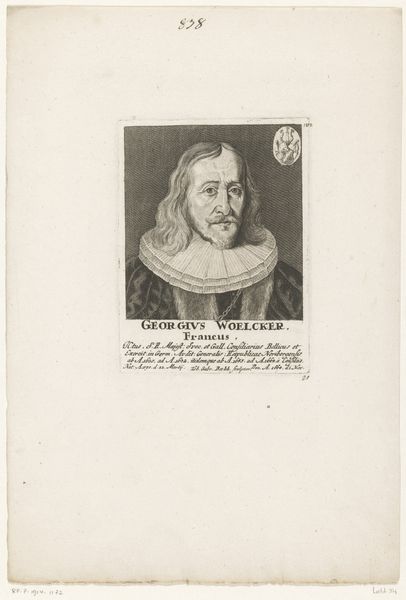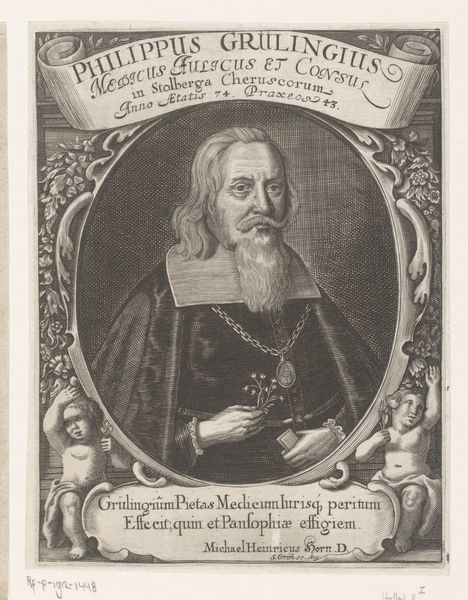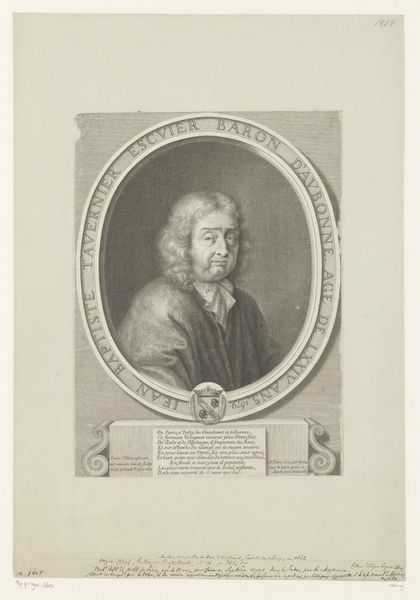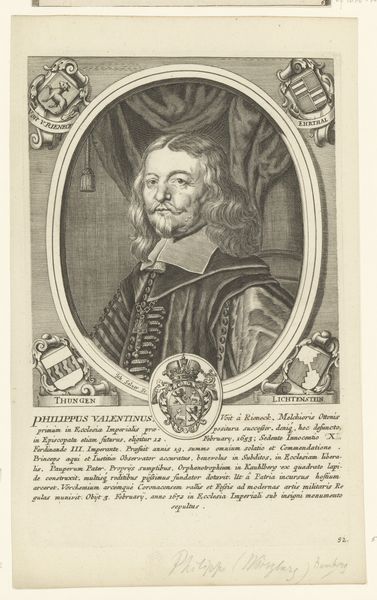
print, engraving
#
portrait
#
aged paper
#
baroque
#
parchment
# print
#
old engraving style
#
line
#
engraving
Dimensions: height 119 mm, width 98 mm
Copyright: Rijks Museum: Open Domain
Curator: The initial impression is one of guarded formality. A man from a bygone era, peering out with what seems like a carefully constructed facade. Editor: Precisely. We’re looking at "Portrait of Carlo Giuseppe Orrigoni," an engraving from somewhere between 1620 and 1660, made by Sébastien Vouillemont. It’s a fine example of Baroque portraiture as a medium for crafting identity and projecting social standing. Curator: The linear precision is quite striking; it really speaks to the meticulous attention given to every detail of Orrigoni's likeness. It speaks to power structures of the time—the male gaze of leadership, maybe? I can't help but also think about access to representation. Who *didn't* get their portrait engraved, and why? Editor: Absolutely. The political symbolism in such portraiture is never subtle. Engravings like this were often commissioned to circulate and solidify a particular image of the sitter, to establish a historical record favorable to them. In Orrigoni's case, this portrait helps to underscore his rank. Notice the inscription beneath the image— it further elevates him, lending a layer of classical gravitas. Curator: Yes, that text almost sanctifies the portrait. Beyond the overt markers of status, what stories do you think might remain untold by the engraving? The work begs deeper understanding of Baroque visual strategies of domination in portraying this individual and his era. Editor: Good point. These kinds of prints often erase, or at least downplay, any aspect of the individual that might complicate the desired narrative. The public role of art back then—particularly portraiture—was firmly intertwined with political image-making. Curator: Understanding who had the privilege to be portrayed this way is the vital point here. It’s crucial to interrogate those power dynamics and reveal that representation itself is a political act. Editor: Well said. This examination really reinforces how context deepens our understanding and encourages us to question visual histories and those embedded within them. Curator: It has certainly been a revealing analysis.
Comments
No comments
Be the first to comment and join the conversation on the ultimate creative platform.
